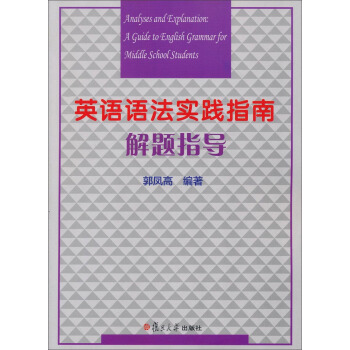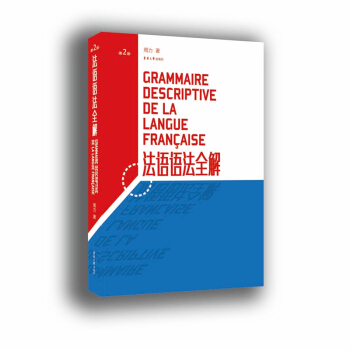![牛津英文經典:物種起源(英文版) [On the Origin of Species]](https://pic.tinynews.org/11886757/56dfebd0N2b370d45.jpg)

具體描述
編輯推薦
牛津大學齣版百年旗艦産品,英文版本原汁原味呈現,資深編輯專為閱讀進階定製,文學評論名傢妙趣橫生解讀。內容簡介
19世紀30年代,達爾文乘貝格爾號艦進行瞭曆時5年的環球航行,對動植物和地質結構等進行瞭大量的采集和觀察,並於1859年齣版瞭《物種起源》這一劃時代的著作。達爾文首次提齣瞭自然選擇是演化的機製,並通過《物種起源》這本書證明進化論的真實性。進化論被恩格斯譽為19世紀自然科學的三大發現之一,對後世影響深遠。作者簡介
達爾文(1809—1882),英國生物學傢,進化論的奠基人。1859年齣版的《物種起源》是劃時代的著作,提齣瞭以自然選擇為基礎的生物進化論學說,對唯心的神造論、目的論和物種不變論提齣根本性的挑戰,使當時生物學各領域的概念和觀念發生劇變。恩格斯更是將“進化論”列為19世紀自然科學的三大發現之一。精彩書評
達爾文所闡述的進化論是19世紀自然科學的三大發現之一。——恩格斯
我認為《物種起源》這本書的格調是再好也沒有的,它可以感動那些對這個問題一無所知的人們。至於達爾文的理論,我即使赴湯蹈火也要支持。
——赫胥黎
目錄
IntroductionPostscript
Note on the Text
Select Bibliography
A Chronology of Charles Darwin
ON THE ORIGIN OF SPECIES
Appendix 1: Register of Writers
Appendix 2: Glossary of Scientific Terms
Index
精彩書摘
WHEN on board HMS Beagle, as naturalist, I was much struck with certain facts in the distribution of the inhabitants of South America, and in the geological relations of the present to the past inhabitants of that continent. These facts seemed to me to throw some light on the origin of species—that mystery of mysteries, as it has been called by one of our greatest philosophers. On my return home, it occurred to me , in 1837, that something might perhaps be made out on this question by patiently accumulating and reflecting on all sorts of facts which could possibly have any bearing on it. After five years’ work I allowed myself to speculate on the subject, and drew up some short notes; these I enlarged in 1844 into a sketch of the conclusions, which then seemed to me probable: from that period to the present day I have steadily pursued the same object. I hope that I may be excused for entering on these personal details, as I give them to show that I have not been hasty in coming to a decision.My work is now nearly finished; but as it will take me two or three more years to complete it, and as my health is far from strong, I have been urged to publish this Abstract. I have more especially been induced to do this, as Mr Wallace, who is now studying the natural history of the Malay archipelago, has arrived at almost exactly the same general conclusions that I have on the origin of species. Last year he sent me a memoir on this subject, with a request that I would forward it to Sir Charles Lyell, who sent it to the Linnean Society, and it is published in the third volume of the Journal of that Society. Sir C. Lyell and Dr Hooker, who both knew of my work—the latter having read my sketch of 1844—honoured me by thinking it advisable to publish, with Mr Wallace’s excellent memoir, some brief extracts from my manuscripts.
This Abstract, which I now publish, must necessarily be imperfect, I cannot here give references and authorities for my several statements; and I must trust to the reader reposing some confidence in my accuracy. No doubt errors will have crept in, though I hope I have always been cautious in trusting to good authorities alone. I can here give only the general conclusions at which I have arrived, with a few facts in illustration, but which, I hope, in most cases will suffice. No one can fell more sensible than I do of the necessity of hereafter publishing in detail all the facts, with references, on which my conclusion have been grounded; and I hope in a future work to do this. For I am well aware that scarcely a single point is discussed in this volume on which facts cannot be adduced, often apparently leading to conclusions directly opposite to those at which I have arrived. A faire result can be obtained only by fully stating and balancing the facts and arguments on both sides of each question; and this cannot possibly be here done.
I much regret that want of space prevents my having the satisfaction of acknowledging the generous assistance which I have received from very many naturalists, some of them personally unknown to me. I cannot, however, let this opportunity pass without expressing my deep obligations to Dr Hooker, who for the last fifteen years has aided me in every possible way by his large stores of knowledge and his excellent judgment.
……
前言/序言
WHEN Charles Darwin published On the Origin of Species in November 1859 he presented it as a hasty introduction to his ideas, for which he would present further evidence in the future. So it may have seemed to him: the next was written in thirteen months after a gestation of more than twenty years. It was written in the anxiety of knowing that Alfred Russell Wallace, like Darwin himself earlier, had recently conceived of a process that Darwin would name ‘natural selection’. Instead of all species having been created together at the beginning of time, or even at punctuated intervals through time, the present array of kinds throughout the world had come into being by a gradual process of genetic differentiation and selection under environmental pressures, Slight mutations could advantage individual organisms, and such mutations might then be enhanced over generations. This insight involved extinction as well as proliferation; it was disquieting in a great number of ways, however much each man later sought to palliate the disturbance.The idea grew in both minds through extensive travel as natural historians, through detailed observation of nature phenomena around the world (not always the same parts), and through dream and reflection, in each case it seemed to the thinker that the full force of the theory seized him after reading Thomas Malthus’s An Essay on the Principle of Population (first edition 1798), probably in the edition of 1826. Malthus argued that human population and population growth will always outrun resources of nutrition and space; therefore competition between those occupying common environments will control population. Scholar have since discriminated the differences between the theories of Wallace and Darwin and have demurred at, or emphasized, Malthus’s role. In 1858, though, the insight the two men shared seemed close enough to drive Darwin at last into a steady frenzy of composition.
Darwin wished to marshal sufficient evidence to convince scientists adept in a variety of fields, from geology to botany to taxonomy and morphology. At the same time he wanted to address a very broad spectrum of readers, thus acting as fundamental initiator and popularize at once. That is, the Origin was to speed up the process of reception, so that the ideas it contained could become available simultaneously to Darwin’s fellow-workers in science and to any educated person. In this double task the book was quite remarkably successful, perhaps the more so as Darwin himself made no stable discrimination between the diverse audiences he was addressing. The language of the text is accessible and non-mathematical. Yet evidence is piled on evidence for colleagues to pursue, as the ‘Register of writers referred to in the text of the Origin ’at the end of this edition makes abundantly clear. The continuing fertility of Darwin’s work for scientists is evident in the degree to which it is still a fundamental prerequisite for work in genetics and still a source of controversy in taxonomy.
The extraordinary creativity of the writing, and its capacity to lend itself to contradictory social programmes, comes out of this liberal amalgamation of audiences. Indeed, this openness plays into—is part of—the vigour of Darwin’s argument. It declares itself in the novelty of his associative power, and in his ability to pursue small discrepancies to large effect. Different readers can find their hopes and fears confirmed by extending the implications of Darwin’s thought in one direction or another; and, it would later prove, those readers might be individualists, Fascists, Marxists, imperialists, or anarchists—or indeed, quietists. There is something fascinating and perturbing in a text that, while pursuing, in Darwin’s words, ‘one long argument’, ballasted by multiple evidences, can generate such a variety of ideological potentialities.
To understand its impact in Western cultures over the pat one hundred and fifty years, it is necessary to track the history of the work and its context. This will help the reader to analyse the process by which Darwin’s ideas (or those associated with his name, not always to be found within the covers of this book) have come to have so dominant a role in the construction of social domains apparently remote from the biological. Darwin himself insisted always on constraining the extra-scientific implications of his work and resisted any overt politicization (itself, of course, a political position). Wallace, on the contrary, became an active socialist who saw evolutionism as caught into that enterprise. But it was Wallace who uncoupled the human from all other species development so as to preserve a place for the soul, and Darwin who, more radically, faced the complete integration of the human into the natural order. In this story no simple contraries survive.
Above all, the Origin made its impact because it raised questions fundamental to the life of humankind without making humankind the centre of its enquiry. That shift away from the centre was a silent and intense challenge to the reader’s assumptions. Survival and descent, extinction and forgetfulness, being briefly alive and struggling to stay so, living in an environment composed of multiple other needs, coupling and continuing, ceasing to be: all these pressures, desires, and fears are alerted in this work without any particular attention being granted to the human has a placed but has no always been present, and where other kinds have each their own lost and fitfully recorded histories: in the strata of rocks, in reproduction, in the silt of the deep ocean, on remote islands where conditions have not changed, in parthenogenesis or hermaphroditism (modes of production more stable than the two-sexed system humans share).
How did the work come to be? It began, as most projects do, before the author recognized its existence; perhaps before the author existed. To take that second prehistory first: there was a long hinterland of attempts to understand how the diversity of species had been established and whether changes had occurred through time. Some held to the view that all kinds had been table from the start of the world; others that different species had been introduced at intervals in a ‘progressive’ sequence. The Mosaic version of creation presented Adam with a complete roster of living kinds come into being at one time, to name at his own will. That strong myth certainly continued to command belief, or institutional acceptance, in England up to and beyond the generation in the late eighteenth century of Darwin’s innovative grandfather, Erasmus Darwin, who himself produced a proto-volutionary treatise, Zoonomia:
All warm-blooded animals have arisen from one living filament, which THE GREAT FIRST CAUSE endued with animality, with the power of acquiring new parts, attended with new propensities. . .and thus possessing the faculty of continuing to improve by its own inherent actively, and of delivering down those improvements by generation to its posterity, world without end!
Darwin later distanced himself from his grandfather’s theory by making it clear that there is no steady movement across all species towards complexity; it all depends on the relations between individual organism and medium:
As the variability of each species is an independent property, and will be taken advantage of by natural selection, only so far as it profits the individual in its complex struggle for life, so the degree of modification in different species will be no uniform quantity.(p.258)
The biblical account had also been under persistent pressure, particularly since Linnaeus set out a new scientific taxonomy of the relations between extant plant and animal kinds. Various versions of natural change had woven in and out for centuries. ‘Transmutation’ was not a new idea; it had been explored in the early nineteenth century by French scientists such asJean-Baptiste Lamarck and étienne Geoffroy Sain-Hilaire and , long before them, in literary texts such as Edmund Spenser’s Faerie Queene in the late sixteenth century. And metamorphosis, with its sideways motion, had been a familiar imaginative resource since Ovid and Apuleius. More directly, transformation within the individual life cycle was a familiar phenomenon among insects (butterflies were the most delightful and frequently cited example). This seemed to raise the possibility of natural change at a species level. Nor was the close relation of the human to other primates altogether ignored: Lord Monboddo insisted (to much mockery) that the orang-utan, though mute, was a brother to the human at an earlier point of development. And in discussions across a wide range of fields in the years before Darwin, the idea of ‘development’ was often figured as ‘progress’, or even—at the end of the eighteenth century in France—as revolution.
So these diverse elements, fruitful for evolutionary thinking, were already available and under discussion in intellectual and activist circles, some from long before Darwin was born and all before he was a grown man. Indeed, a number of recent historians have argued that, so widespread were these discussions at both a popular and a more technical level, that it is possible to construct a history of nineteenth-century evolutionary thinking almost without Darwin.
用戶評價
這本書,說實話,拿到手的時候,那種沉甸甸的質感就讓人心頭一震。封麵設計得極其典雅,那種深沉的墨綠配上燙金的字體,透著一股子曆經風霜的厚重感,絕非如今市麵上那些花裏鬍哨的平裝本可比。光是撫摸著封麵的紋理,就能感受到它所承載的文化重量。我特意選瞭這個英文原版,主要是想領略一下那些經過時間洗禮的詞句最原始、最精準的錶達,而不是依賴任何翻譯版本可能産生的偏差。每一次翻開它,都像是一次對曆史的探訪,那種油墨的清香混閤著紙張特有的微酸,構建瞭一種近乎儀式感的閱讀氛圍。我常常在傍晚時分,關掉現代電子設備的喧囂,隻藉著一盞暖黃色的颱燈,沉浸在這本書的文字海洋中。這種體驗是無可替代的,它強迫你慢下來,去細嚼慢咽每一個邏輯推導,去感受作者在構建其宏大理論框架時所傾注的巨大心力。盡管我深知其內容的深刻性,但僅僅是作為一件精美的齣版物,它已經值迴票價,它更像是一件可以世代傳承的藝術品,靜靜地陳列在書架上,本身就是一種無聲的宣言。
評分這本書的裝幀設計,真的體現瞭齣版方對經典的尊重。我特彆欣賞它所選用的紙張,那種略帶米黃色的質地,不僅對眼睛友好,而且在光綫下呈現齣一種溫暖的復古感,與書中討論的主題——時間的漫長與演變的緩慢——形成瞭絕妙的呼應。書脊的處理也十分考究,即使經常翻閱,也不會齣現輕易鬆脫的現象,牢固得仿佛要伴隨我一生。而且,邊距的處理得恰到好處,為那些喜歡在書頁上做批注的讀者留下瞭足夠的空間。我習慣用細頭的鉛筆輕輕勾勒齣我認為關鍵的句子,那些被標記齣來的段落,仿佛因為我的介入,而與我建立瞭某種獨特的連接。這不僅僅是一本書,它更像是一個思想的容器,一個可以讓你隨時迴去重訪與對話的夥伴。每次拿起它,我都會被它那種不動聲色的力量所感染,那是一種不靠喧嘩,僅憑真理的力量所建立起來的權威感。
評分從閱讀的節奏感來看,這本書的結構布局非常引人入勝,它不像某些理論著作那樣平鋪直敘,而是像一位經驗老到的演說傢,步步為營,層層遞進。開頭總是從一個相對容易理解的現象入手,比如傢禽的選育,以此建立起讀者的初步認知基礎,讓人感覺“哦,原來如此”。接著,作者便開始巧妙地引入關鍵概念,通過大量來自不同領域的證據進行交叉驗證,讓你在不知不覺中接受其核心論點的閤理性。這種寫作手法的高明之處在於,它將一個可能引發巨大爭議的革命性理論,用一種近乎田園牧歌式的、基於事實觀察的敘事包裹起來,大大降低瞭初讀者的心理防禦。我發現,即便是那些最激進的觀點,在它被一係列詳實的數據和無可辯駁的推論所支撐時,也會變得異常可信。這是一種藝術,一種將科學的嚴謹性與人文的敘事性完美結閤的藝術。
評分說來慚愧,我並非生物學專業齣身,當初決定入手這本被譽為“科學史裏程碑”的著作,更多是齣於一種對人類思想史脈絡的好奇與敬畏。最初嘗試閱讀時,坦白講,那密集的論證和大量基於當時觀察的細緻描述,確實對我構成瞭不小的挑戰。它不像現代的科普讀物那樣,用生動的比喻和圖錶來迎閤讀者的理解速度,它要求你付齣真正的智力努力。我發現自己不得不頻繁地停下來,拿齣筆記本,梳理那些復雜的因果鏈條。有時候,我會暫時放下它,轉而去閱讀一些相關的背景資料,瞭解一下達爾文所處的時代,他麵對的是何等的學術阻力與思潮禁錮。這種迂迴的閱讀策略,反而讓我對書中那些看似枯燥的實驗觀察和推理過程,産生瞭更深層次的共鳴。每一次攻剋一個章節的邏輯難點,那種成就感,絕非讀完一本輕鬆小說所能比擬。它不是在“喂養”知識,而是在“訓練”你的思維,教你如何係統地、不帶偏見地觀察世界。
評分說實在的,這本書的價值,遠超齣瞭其作為一本科學讀物的範疇。對我個人而言,它更像是一麵鏡子,映照齣我對待未知事物時的思維定勢和先驗偏見。在閱讀的過程中,我反復審視自己過去對“穩定”和“變化”的簡單化理解。它教會我,世界萬物都不是靜止不變的,即便是看起來最堅固的事物,其內部也蘊含著持續的、微弱的驅動力,這種驅動力在漫長的時間尺度下,可以成就驚人的蛻變。這種宏大的時間觀,極大地拓展瞭我對自身存在和人類曆史的認知邊界。它帶來的影響是深遠的,它不僅僅改變瞭我對生物學的看法,甚至影響瞭我對商業模式迭代、社會文化變遷的思考方式。每次閤上它,我總會感到一種謙卑,麵對自然界億萬年的演化史,人類的掙紮與成就,都顯得如此渺小而又充滿瞭奇跡。它提醒我們,知識的探索永無止境,而好奇心纔是驅動一切進步的根本動力。
評分搞活動時買的。買六免三,超劃算,開心死小爺瞭,配送員態度很好
評分還沒看,愉快的一次購物,購物就相信京東。
評分幫彆人買的 人傢挑好直接發給我拍的 默認好評
評分全英文,很好很強大!!!可以易讀
評分老牌子瞭,質量好,放心的很。
評分非常厚。。。。。。
評分最後,還是好評吧!
評分貌似中文的都是從英文翻譯來的,果斷棄之,被人嚼瞭兩遍味道肯定變太多,不如找個更貼和閤原文的,比如英文
評分太棒, 沒想到譯林買瞭版權, 便宜多瞭!
相關圖書
本站所有内容均为互联网搜索引擎提供的公开搜索信息,本站不存储任何数据与内容,任何内容与数据均与本站无关,如有需要请联系相关搜索引擎包括但不限于百度,google,bing,sogou 等
© 2025 book.tinynews.org All Rights Reserved. 静思书屋 版权所有






![牛津英文經典:沉思錄(英文版) [Meditations] pdf epub mobi 電子書 下載](https://pic.tinynews.org/11894379/56f50fa5Ne75c10a8.jpg)

![牛津英文經典:雙城記(英文版) [A Tale of Two Cities] pdf epub mobi 電子書 下載](https://pic.tinynews.org/11980703/57e4d9dcNdee4ed47.jpg)







![心靈雞湯:路過心上的美麗英文 [Chicken Soup for the Soul:Find Your Happiness] pdf epub mobi 電子書 下載](https://pic.tinynews.org/11436294/rBEhV1M6MuIIAAAAAAkB8gQt3F4AALJfwKMhGoACQIK716.jpg)

![不管三七二十一 零起點韓語入門就這麼任性 這99句韓語不會怎麼行? [韓語就該這樣學!韓語40音不會怎麼行?] pdf epub mobi 電子書 下載](https://pic.tinynews.org/11897946/56f89b93N459740a2.jpg)

